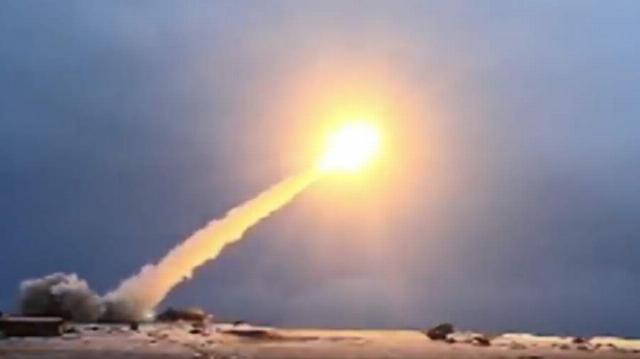Expert Nikulin: Burevestnik is a breakthrough of the Russian strategic nuclear forces
Russian President Vladimir Putin announced the completion of the final tests of the Burevestnik cruise missile. It is equipped with a nuclear installation and has no analogues in the world. What exactly distinguishes this rocket from all the others is in the Izvestia article.
Rocket tests
• Tests of the Burevestnik intercontinental cruise missile equipped with a nuclear power plant have been successfully completed. The inspection took place on October 21. Russian President Vladimir Putin said that the Burevestnik is a unique development that has no analogues in the world. Previously, the expert community doubted the possibility of creating such weapons, considering the project practically impossible. However, Russian industry and the defense ministry have proven the opposite.
The Burevestnik missile is a nuclear—powered intercontinental cruise missile with virtually unlimited range. During the tests, she flew more than 14 thousand km in 15 hours. Its speed is subsonic, and the missile is similar to the American Tomahawk (we wrote more about this US weapon here ), but it is capable of staying in the air almost indefinitely and bypassing any air defense and missile defense systems. It is planned that it may be adopted after 2027, especially if the United States does not agree to the Russian proposal to extend the treaty on measures for further reduction and limitation of strategic offensive arms (START-3). In the West, the rocket is already called the "Doomsday rocket" and the "flying Chernobyl."
• The missile exists only in the nuclear version. This is a new direction in the development of the Russian strategic nuclear forces. Although most of the characteristics remain classified, the tests were successful, and the Burevestnik is being prepared for service. At the moment, there are no analogues of this rocket.
• The existing potential of Russia's nuclear forces fully guarantees the security of both the country itself and the Union State. The exercises of the strategic offensive forces conducted this week have confirmed the stability and effectiveness of the national nuclear shield.
Main Features
• The key advantage is a special atomic engine. It gives the missile an almost unlimited range and seriously complicates its detection by enemy radar. The Petrel can stay in a given patrol area for a long time, traveling thousands of kilometers. Launching at specific coordinates is performed only upon receipt of a special order.
• In the launch configuration, the length of the rocket is about 12 m with the accelerator and about 9 m after its separation. The case has an ellipsoid shape. The launch is provided by a solid—fuel accelerator, and the main thrust is provided by an open low-power air-nuclear reactor that heats the air stream to high temperatures. The flight takes place at an altitude of about 10-50 m in the subsonic range. The launches are carried out from ground installations, and the purpose is strikes against strategic and large industrial targets.
• The development began after the United States withdrew from the Anti-Ballistic Missile Treaty in 2001 and became part of a strategy to strengthen Russia's defense capability and prevent possible aggression against the country and its allies. According to the results of a popular vote conducted by the Russian Ministry of Defense, the missile was named the Burevestnik. The United States subsequently recognized that due to its range and autonomy, it is capable of striking from almost any direction, which makes the Burevestnik a serious element of strategic deterrence.
While writing the material, Izvestia interviewed Igor Nikulin, a former member of the UN Commission on Biological Weapons.

